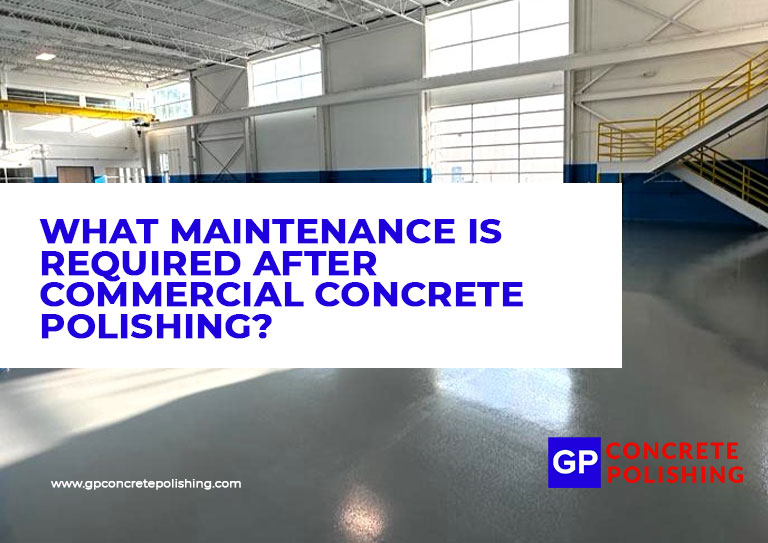
After you’ve polished your commercial concrete floors, it’s crucial to maintain their appearance and durability. Regular cleaning practices, like daily sweeping and using a pH-neutral cleaner, play a significant role.
But that’s just the beginning. There are also other essential tasks, such as periodic sealing and addressing any wear and tear that may arise.
Understanding these steps can make a big difference in the longevity of your floors. So, what should you focus on first?
Regular Cleaning Practices
Even though polished concrete floors are known for their strength and low maintenance, consistent cleaning is essential to preserve their gloss and longevity.
Daily and Weekly Cleaning Routines
Routine cleaning prevents the buildup of dirt and debris that can gradually wear down the surface.
- Sweep or dust-mop the floor daily using a microfiber or untreated dust mop to eliminate grit and dust.
- Incorporate a weekly wet mopping schedule using only pH-neutral cleaners specifically designed for polished concrete.
- Avoid using acidic or abrasive cleaning products, as they can dull the polished finish and damage the surface.
Managing Spills and High-Traffic Areas
Quick attention to spills and smart traffic control can go a long way in maintaining floor quality.
- Immediately wipe up any liquid spills to prevent potential staining or moisture damage.
- Place mats or rugs near entrances and high-traffic areas to reduce the amount of dirt and moisture brought indoors.
- Encourage employees or household members to wear clean footwear to reduce surface grime.
Long-Term Maintenance Benefits
Regular cleaning doesn’t just keep your space attractive—it preserves the integrity of your investment.
- Prevents surface etching, scratches, and loss of shine caused by dirt abrasion.
- Enhances the floor’s natural reflectivity, improving lighting efficiency and appearance.
- Extends the life of the polished surface, reducing the frequency and cost of refinishing or repairs.
Periodic Sealing and Protection
While regular cleaning keeps polished concrete looking sharp, sealing is essential for protecting the surface and maintaining long-term performance.
Why Sealing Matters
Sealing acts as a protective barrier that helps preserve the floor’s finish and resist damage.
- It protects against stains, moisture penetration, and surface wear from daily traffic.
- A properly sealed floor maintains its sheen longer and reduces the need for frequent polishing.
- It also helps guard against chemical spills and surface abrasion in high-use areas.
Recommended Sealing Frequency
The sealing schedule should align with how much use the space receives.
- Most polished concrete floors benefit from resealing every 1 to 3 years.
- High-traffic commercial or industrial areas may require more frequent attention.
- Light residential use may allow for longer intervals between applications.
Best Practices for Sealing
Proper application ensures your floors get the maximum benefit from sealing.
- Use a premium sealant designed specifically for polished concrete surfaces.
- Ensure even coverage across the entire floor—professional application is often recommended.
- After sealing, maintain the surface using only pH-neutral cleaners to avoid breaking down the protective layer.
Periodic sealing not only safeguards your concrete floors but also enhances their appearance, increases durability, and reduces the likelihood of expensive repairs in the future.
Addressing Damage and Wear
To keep polished concrete floors in top condition, it’s important to deal with signs of wear and damage as soon as they appear.
Identifying Common Issues
Stay alert to visible changes in your flooring, especially in high-use areas.
- Scratches, chips, or surface stains can develop over time and should be addressed quickly.
- Dull patches or uneven gloss often signal areas that require attention.
- Cracks or structural defects may need specialised repair before they worsen.
Repair and Restoration Techniques
Tackling small issues early can prevent bigger problems later.
- Minor surface scratches can usually be buffed out with a polishing compound or honing pad.
- Deeper damage may require filling with a concrete patching product followed by re-polishing.
- Professional restoration is recommended for widespread wear or inconsistent shine.
Proactive Maintenance Tips
Routine inspections help catch problems before they escalate.
- Focus on high-traffic areas like entrances, hallways, and work zones.
- Establish a regular maintenance plan that includes cleaning, spot checks, and scheduled polishing.
- Use entry mats to reduce grit and moisture that can contribute to surface damage.
Taking quick and appropriate action when wear appears will help preserve the strength, beauty, and functionality of your polished concrete floors for years to come.
Maintaining commercial polished concrete floors involves a proactive approach that combines daily cleaning, periodic sealing, and timely repairs to ensure long-term performance and visual appeal. These efforts not only keep the surface looking clean and professional but also protect your investment by preventing damage and extending the floor’s lifespan.
With a consistent maintenance routine in place, your polished concrete will continue to offer durability, safety, and cost-efficiency, supporting a well-maintained, high-functioning business environment.

Comments are closed